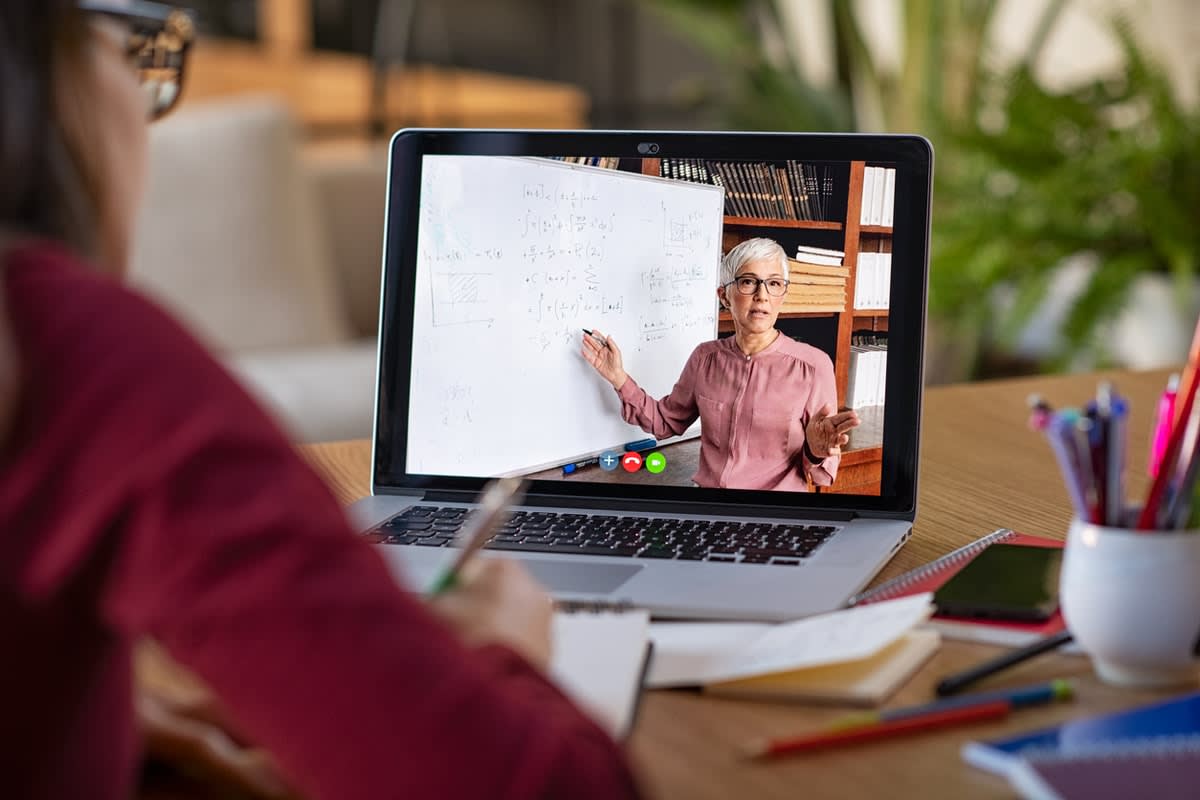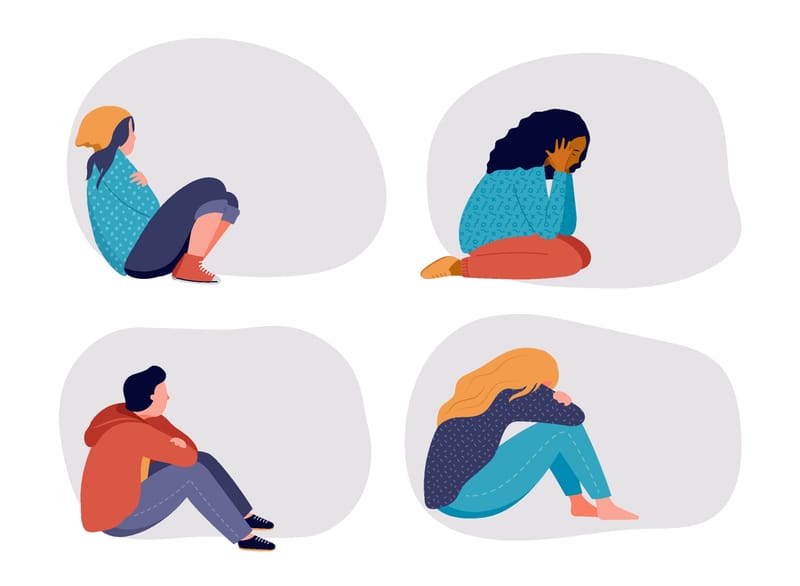
Global school shutdowns in the wake of the COVID-19 pandemic have pushed online education and virtual schooling to the forefront of the political agenda.
Millions of young people being educated through Zoom tutorials, Google Classroom, and Microsoft Teams was soon touted as a significant tipping point in the evolution of educational technology use. After this – it is reasoned – we’ll have to seriously consider the prospect of online education taking on a more prominent role as school systems adjust to the post-pandemic world.
At this point, it’s important to push back against the hubris emanating from some in the EdTech community, as well as the equally strong dismissals from their detractors.
It certainly is not appropriate for leading EdTech figures to talk excitedly of “the genie being let out of the bottle”, or there being a technological “silver lining” to the COVID-19 disruptions. Neither is it appropriate for educational conservatives to talk of the past few months as evidence of “just how impractical and inferior [EdTech] is”.
Instead, the online education being deployed by schools during the first half of 2020 is best described as a form of “temporary distance education”. These are emergency measures – involving what Sean Michael Morris describes as teachers, students and parents “who never expected – nor ever wanted – to use digital technology to communicate or work” forced into quickly developing ways of studying and teaching as best they can.
What teachers, students and parents have been doing over the past few weeks is certainly not comparable with the sophisticated and deliberate forms of online education covered in the research literature.

Nevertheless, there are plenty of lessons that can be taken from our ongoing experiences of what happens when technology-based remote teaching is enacted at scale. These range from issues of data privacy and security that arise when students are learning exclusively at home, through to the networks of commercial interests that quickly spring up to gain advantage.
Alongside these questions of the politics and ethics of online education, it’s also salutary to reflect on the lessons being learnt about teaching with technology.
Of course, there has been 30 years’ or more discussion before the pandemic of what constitutes teachers’ “digital literacy”, “digital competence”, “digital fluency”, and the like. These definitions and frameworks have understandably tended to focus on issues of technical proficiency, e-safety and information literacy. Yet, the COVID-19 shutdowns are highlighting the need to go beyond these previous descriptions – especially in terms of terms of better acknowledging the delicate social contexts and circumstances of online education, as well as the relationships between teachers and students.
Additional digital competencies
As such, this is a good time to begin reflecting on the additional forms of “digital competence” that have come to the fore during the ongoing period of COVID-19 remote teaching. These include the following aspects of teaching with technology:
- First, is the importance of having heightened awareness of the inequalities implicit in online education. One of the immediate reconfigurations of the COVID-19 teaching period has been the relocation of any “class” wholly into the households of 25 different students. Suddenly, it’s no longer possible to work around differences in students’ varying capabilities to engage in schoolwork at home. This includes obvious differences in students’ technology resourcing (the so-called “homework gap”), but also notable differentials in students’ “social envelope” – that is, support from parents and families to engage in technology-based schoolwork. Faced with a class of 25 students, each with very different household circumstances and commitments, online teachers have quickly learnt not to rely on “one-size-fits-all” assumptions about the type, timing and mode of working.
- Indeed, teachers have quickly found that they cannot expect students to be doing the same things online at home as they might be reasonably expected to do online at school. This raises the need for digitally-flexible approaches that reflect the multi-situated nature of students’ learning environments. Timings need to be flexible and asynchronous, scheduling needs to be stretched, alternate options need to be available for working offline, and teaching needs to be designed to fit around the complex needs of different students (rather than students all being expected to fit around the teaching).
While COVID-19 is clearly an exceptional upheaval, it illustrates the fact that students and teachers are facing all manner of emotional issues at the best of times.
- Following from this need for pedagogic flexibility is a capacity for digital improvisation. Again, the COVID-19 pivot to online education has underscored the fact that technology often fails, and that even the best-planned digital education offerings can fall short of expectations. This was illustrated by the Queensland government schools website crashing during the first day of 1.8 million students in the state logging on for their remote schooling. Elsewhere, much has been made of the Zoom-bombing of online lessons, and other instances of digital sabotage. Teachers have found themselves having to improvise quick workarounds for all manner of glitches, breakdowns and unexpected intrusions. This involves teachers having a Plan C alongside a Plan B, as well as exploring ways of trusting students (and parents) to organise some learning arrangements for themselves – whether on an individual “do it yourself” or more collective “do it ourselves” basis.
- Perhaps the most overwhelming element of the COVID-19 teaching period has been its emotional and fragile nature. This raised the need for teachers to display high levels of digital empathy, care and compassion towards their students. The pandemic is clearly a period where tensions have been running high. Students are understandably unsettled – their school careers are being interrupted, parents’ job prospects under threat, and families facing the prospect of serious illness. As such, teachers have found themselves having to sensitively deliver programs of online education amid considerable turmoil – reflecting lockdown mantras along the lines of “be kind, be calm, be safe”. While COVID-19 is clearly an exceptional upheaval, it illustrates the fact that students and teachers are facing all manner of emotional issues at the best of times. Any digital educator working at a distance from their students needs to be sensitive to this.
- Allied to this need for compassion is the core competency of being able to exercise digital restraint. In contrast to the promises of the limitless and abundant nature of digital technologies, teachers and students are finding that remote online schooling requires clear boundaries in order to be manageable. Both have quickly found that synchronous video classes and meetings are mentally exhausting in ways that their face-to-face equivalents are not. Teachers have found that preparing online classes can require much more preparation time and planning, as can dealing with student and parent “feedback”. Some teachers have quickly experienced push-back from students feeling genuinely over-burdened by multiple tasks and activities. All told, digital technologies can easily exacerbate a collective descent into unhealthy patterns of overworking on a 24/7 basis. COVID-19 is therefore highlighting the need for teachers to exercise discretion and restraint in terms of choosing when to not use digital technologies. Digital video presentations can be “good enough” rather than pitch-perfect. Online learning systems might offer the opportunity to continuously monitor and surveil students’ activities, but these features simply instil a culture of performativity, mistrust and busy-work. Knowing what not to do with technology is a key digital competence.

All these aspects of digital education have long been talked about in some corners of the higher education educational technology community – such as the likes of the Critical Digital Pedagogy collective, and Edinburgh University Manifesto for Teaching Online. Yet, these issues are far less often raised in terms of school teachers, and it’s certainly rare to see these issues being foregrounded in mainstream policy and industry conversations about how educators need to “do” technology.
Yet, we’ve reached a point where hundreds of millions of school students, teachers and parents now have first-hand experience of being reliant on digital technology, and a better sense of what qualities and characteristics have made these experiences easier, more engaging and perhaps even more effective.
Watch: A Different Lens – Is teaching Australia's most underappreciated profession?
The relational nature of online education
In all these senses, COVID-19 has taught us all to value the social, emotional and profoundly relational nature of online education.
Of course, most of these additional digital teaching “competencies” are straightforward human qualities that apply to any aspect of education (and, indeed, any aspect of daily life). But the COVID-19 experience has shown how it’s important to reassess how these familiar qualities and traits (such as flexibility, contextual awareness, and compassion) translate over into the less familiar settings of video conferencing and learning management systems.
So, from now on, talk about teachers’ “digital understanding” and “digital confidence” shouldn’t be taken to refer only to knowledge about managing cloud storage, and engaging with platform analytics.
Teachers need to have good awareness of the social, emotional and affective aspects of technology-based education, and feel confident in their capacity to respond appropriately. Teaching of any sort is never simply a technical process – this is certainly the case when teaching online.





